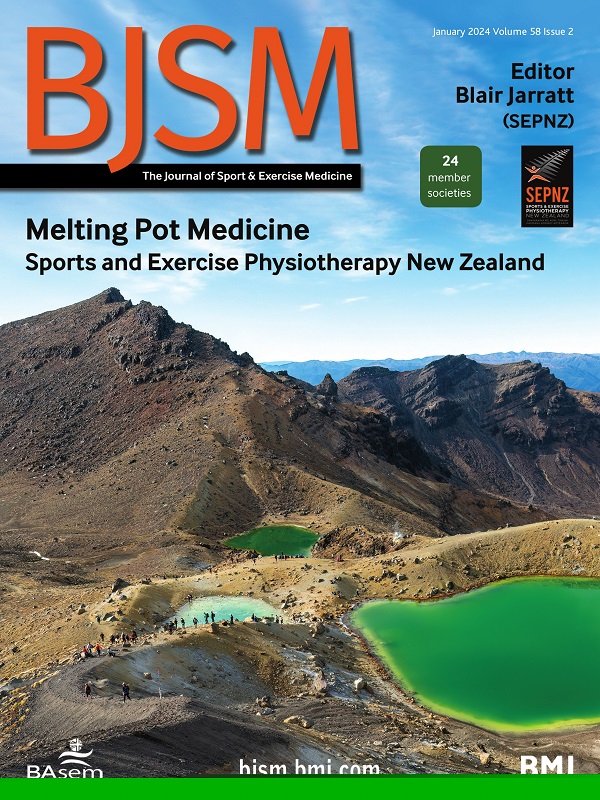Sports to empower rural youth in India: the Sondara Gurukul school
IF 11.6
1区 医学
Q1 SPORT SCIENCES
引用次数: 0
Abstract
The Indian Government’s landmark initiative Khelo India (Play, India) seeks to infuse a sports culture in the country and promote excellence through investments in sport infrastructure and coaching.1 There is general interest in increasing mass participation in sport, including indigenous sports. Indeed, India hosted the first World Cup of the sport Kho-Kho in January 2025,2 and in March 2025, England hosted the Kabaddi World Cup, another traditional Indian sport.3 The United Nations also proclaimed 21 June as the International Day of Yoga, recognising its universal appeal to promote physical, mental and spiritual health.4 Despite these important events, little trickles down to promoting sports participation at the grassroots level. In fact, only about 50% of children and adolescents in India meet the global physical activity guidelines, and less than half of schools provide the necessary facilities and training for sports.5 The realities on the ground, particularly in remote and rural communities, present many challenges to advance youth sports. Thus, it takes vision, committed leadership and community resilience to foster physical activity and sports participation in rural India. One initiative to foster youth physical activity is brewing at Sondara Gurukul—a school for children from farming communities in one of the most deprived, drought-prone regions of central India. Sondara Gurukul is a boarding school started over 40 years ago by a dedicated teacher who believed in the traditional Gurukul philosophy, that is, learning by example. Children learn from their teachers by example of good values and actions, moment by moment. The school started with only a handful of students, but now enrols over 250 boys between 10 and 15 years, and has recently started day schooling for girls. These children are mostly first-generation learners. This region has often been in the news for high rates …体育赋予印度农村青年权力:Sondara Gurukul学校
印度政府具有里程碑意义的倡议Khelo India (Play, India)旨在通过对体育基础设施和教练的投资,在该国注入体育文化,促进卓越人们普遍关心增加群众参与体育运动,包括土著体育运动。事实上,印度在2025年1月举办了第一届Kho-Kho世界杯,而在2025年3月,英国举办了另一项传统的印度运动——Kabaddi世界杯联合国还宣布6月21日为国际瑜伽日,承认瑜伽对促进身心健康的普遍呼吁尽管有这些重要的活动,但在促进基层体育参与方面收效甚微。事实上,印度只有约50%的儿童和青少年符合全球体育活动指南,不到一半的学校提供必要的体育设施和培训当地的现实,特别是在偏远和农村社区,为促进青少年体育提出了许多挑战。因此,促进印度农村地区的体育活动和体育参与需要远见卓识、坚定的领导和社区韧性。一项促进青少年体育活动的倡议正在Sondara gurukul酝酿中,这是一所学校,招收来自印度中部最贫困、最容易发生干旱的地区之一的农业社区的孩子。Sondara Gurukul是一所寄宿学校,40多年前由一位虔诚的老师创办,他信奉传统的Gurukul哲学,即以身示范学习。孩子们通过良好的价值观和行为向老师学习,每时每刻。这所学校一开始只有少数学生,但现在招收了250多名10到15岁的男孩,最近开始对女孩实行日制教育。这些孩子大多是第一代学习者。这个地区经常因高利率而见诸新闻。
本文章由计算机程序翻译,如有差异,请以英文原文为准。
求助全文
约1分钟内获得全文
求助全文
来源期刊
CiteScore
27.10
自引率
4.90%
发文量
217
审稿时长
3-8 weeks
期刊介绍:
The British Journal of Sports Medicine (BJSM) is a dynamic platform that presents groundbreaking research, thought-provoking reviews, and meaningful discussions on sport and exercise medicine. Our focus encompasses various clinically-relevant aspects such as physiotherapy, physical therapy, and rehabilitation. With an aim to foster innovation, education, and knowledge translation, we strive to bridge the gap between research and practical implementation in the field. Our multi-media approach, including web, print, video, and audio resources, along with our active presence on social media, connects a global community of healthcare professionals dedicated to treating active individuals.

 求助内容:
求助内容: 应助结果提醒方式:
应助结果提醒方式:


